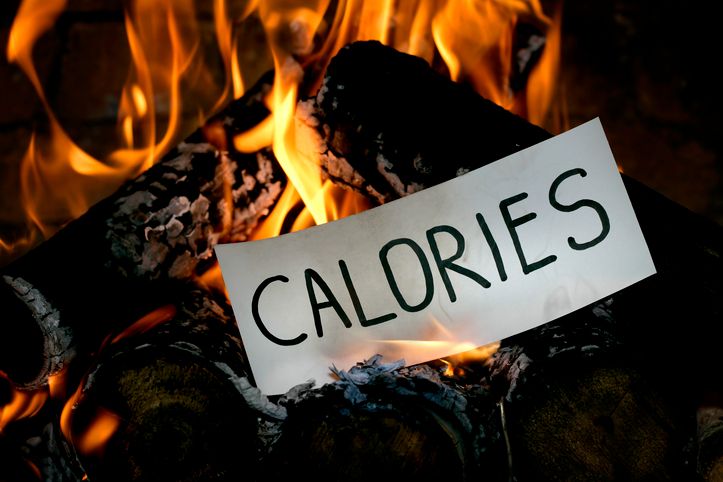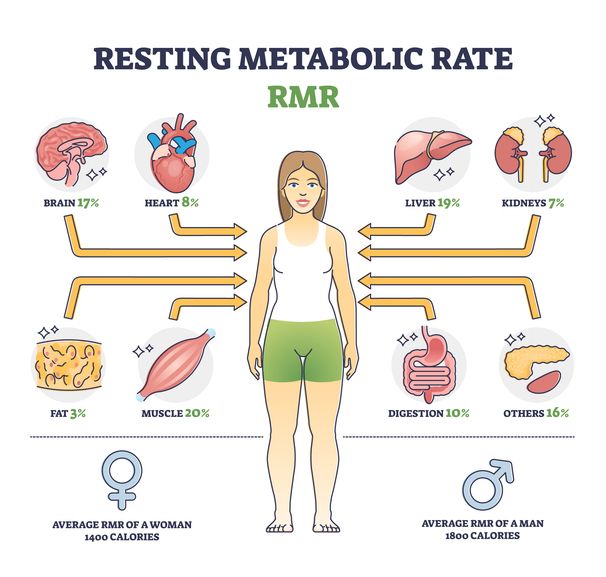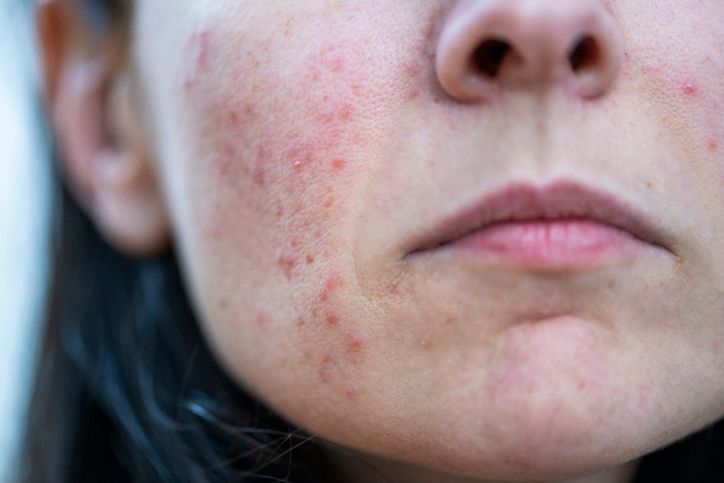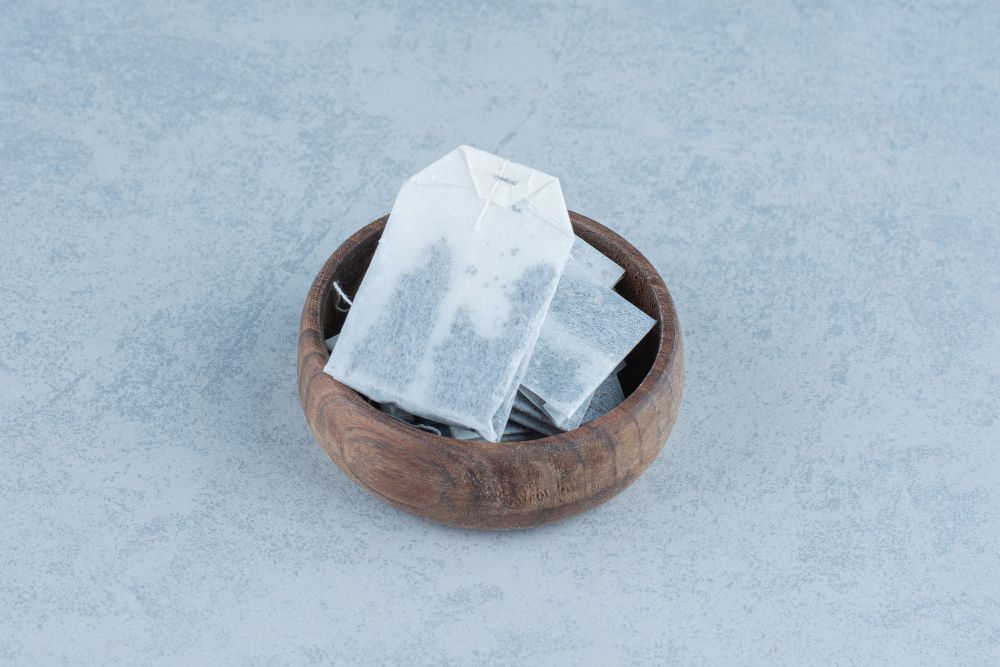
Author: Natalie Ng|Updated: 17 June 2025
You don’t always need a workout to help your body burn more calories. In fact, a big part of your daily energy expenditure comes from everyday movement—things like walking around your home, standing instead of sitting, or doing small tasks throughout the day. This is known as non exercise activity thermogenesis, or NEAT, and it plays a much bigger role in calorie burn than most people realize. Even if you’re not doing structured exercise, your body still uses energy in lots of small ways. The calories burned through these movements can really add up over time, especially when you combine them with habits like good sleep, staying hydrated, and balanced eating. These things all support your metabolic rate and make it easier to maintain a healthy weight. Your total daily energy expenditure includes more than just workouts. It also includes your resting metabolic rate, food digestion, and those little movements you make without even thinking. Making a few small changes to your routine can help increase non exercise calorie burn naturally. So if you’re wondering how to burn more calories without intense physical exercise, keep going—we’re breaking down eight easy, effective ways to do it.

How the Body Burns Calories Without Exercise

Different sources of daily energy expenditure
Your body burns calories all day—even when you're not moving much. This total energy use is called total daily energy expenditure (TDEE), and it's made up of a few parts:
• Basal metabolic rate (BMR): The calories your body burns at rest to keep you alive
• Thermic effect of food (TEF): The energy used to digest and process what you eat
• Non exercise activity thermogenesis (NEAT): Calories burned during everyday movement
• Exercise activity thermogenesis (EAT): Calories used during structured workouts
Even without workouts, your body still uses a large portion of its daily energy through BMR and NEAT. That’s why increasing non exercise activity—like standing, stretching, or walking between tasks—can be so effective.
Why NEAT is more powerful than it seems
Measuring NEAT involves taking a close look at daily habits. People with higher NEAT tend to be more physically active during daily life, even without formal exercise. Over time, these small movements add up, helping regulate body weight and reducing the impact of sedentary behavior.
Two people with the same body mass index and food intake can have different weight outcomes simply because one of them moves more throughout the day. That's the power of everyday movement and how it fits into human energy homeostasis—your body's way of balancing energy in and energy out.

Factors That Influence Resting Metabolic Rate

Why your body burns calories differently at rest
Your resting metabolic rate (RMR) is the amount of energy your body uses to keep basic systems running—like breathing, circulation, and body temperature regulation—without any physical activity. It accounts for most of your total daily energy expenditure, and several key factors affect how many calories your body burns at rest:
Muscle mass
Muscle tissue requires more energy to maintain than fat tissue. People with higher muscle mass tend to have a higher resting calorie burn, even during periods of inactivity.
Body composition
Two people with the same body weight can have different calorie needs depending on their ratio of muscle to fat. A leaner body typically burns more calories at rest.
Age
As you age, muscle mass naturally decreases unless you maintain it through physical activity. A lower muscle-to-fat ratio can slow down resting metabolic rate over time.
Sex
Men often have higher muscle mass and less body fat than women, which usually leads to a higher RMR.
Genetics
Some people are born with a naturally faster or slower metabolism. Genetics can influence how your body stores fat and how much energy it expends during rest.
Knowing what affects RMR helps you make daily choices that support long-term fat loss, energy balance, and healthy weight regulation—even without intense physical exercise.
Read More
Book Now to Experience
S6 Body Sculpting Treatment
1 Minute Self-Registration
Date should not be before minimal date

Non-Exercise Fat Burning Hack 1: Improve Sleep Quality to Boost Calorie Burn
Impact of sleep on daily energy expenditure
Sleep isn’t just about rest—it plays a big role in how your body uses energy. When you don’t get enough sleep, levels of ghrelin (a hormone that increases hunger) go up, while leptin (which helps you feel full) goes down. This shift can lead to higher calorie intake and makes it harder to manage body weight. At the same time, poor sleep may reduce your resting metabolic rate, which affects how many calories you burn at rest.
Your body also responds to sleep loss by increasing cortisol, which may impact how your body stores fat. Getting regular sleep helps your body stay balanced, supports metabolic rate, and may help reduce the risk of weight gain—without needing to increase structured exercise.
Tips to support calorie burn while you sleep
• Stick to regular sleep and wake times
• Keep your bedroom quiet, cool, and dark
• Avoid screens at least 30 minutes before bed
• Try a warm shower or light stretching before sleep
• Skip late-night meals to help manage blood sugar and total energy expenditure
Quality sleep helps regulate hormones that affect hunger, calorie expenditure, and fat storage. By improving your sleep habits, you support non exercise activity thermogenesis and total daily energy expenditure—without adding more physical activity.

Non-Exercise Fat Burning Hack 2: Space Meals to Support Calorie Burn
Timing meals for steady energy expenditure
The timing between meals affects how your body manages energy. Instead of frequent snacking or constant grazing, giving your body 4 to 5 hours between meals can help maintain stable blood sugar levels and support a regular calorie burn. This spacing reduces the chance of insulin spikes and helps control overall calorie intake without the need for intense physical exercise.
By allowing your body time to fully digest one meal before the next, you also reduce the chances of mindless snacking. This supports a healthier relationship with food and encourages your body to rely more on stored energy between meals—helping you burn daily energy more efficiently through non exercise activity.
Sample daily meal rhythm
• Breakfast: within 1 hour of waking
• Lunch: 4–5 hours after breakfast
• Dinner: 4–5 hours after lunch
• Light evening snack only if genuinely hungry, ideally 2–3 hours before bedtime
Spacing meals this way can support non exercise calorie burn and improve how your body uses energy throughout the day.
Book Now to Experience
S6 Body Sculpting Treatment
1 Minute Self-Registration
Date should not be before minimal date

Non-Exercise Fat Burning Hack 3: Time Meals to Support Natural Fat Burn
Early meal timing and its link to calorie expenditure
Some people believe you must stop eating after a certain hour to burn more fat. But research suggests your body doesn’t stop burning calories at night. What affects your daily calorie burn more is the timing of your meals in relation to your sleep and activity schedule—not the hour on the clock.
Rather than setting a strict cutoff like 6 PM, focus on aligning your meals with your waking hours. Eating earlier in the day, when your body is more active, helps improve how energy is utilized. Giving your body at least 2 to 3 hours between your last meal and bedtime also supports digestion and stable blood sugar levels.
Adjusting your last meal without restricting your schedule
• If you wake up at 7 AM, aim for dinner by 6:30–8:00 PM
• Keep at least a 2-hour gap before going to bed
• Eat your heaviest meals earlier when you're more physically active
Shifting food intake earlier supports your total energy expenditure without needing additional exercise activity thermogenesis.

Non-Exercise Fat Burning Hack 4: Use Overnight Fasting to Support Metabolic Health
Natural fasting windows and their effect on calorie burn
Fasting doesn’t have to be extreme to be effective. Long fasts may slow your metabolic rate as your body adjusts to conserve energy, which can reduce total daily energy expenditure. Instead, a short overnight fast—about 10 to 12 hours between dinner and breakfast—can support healthy energy use without lowering the number of calories you burn.
This fasting window allows your digestive system time to rest and helps regulate insulin levels. It works alongside non exercise activity thermogenesis by reducing blood sugar fluctuations that often lead to low energy or cravings.
Simple fasting habit to support calorie expenditure
• Finish your last meal 2–3 hours before sleep
• Have breakfast 10–12 hours after dinner
• Avoid snacking late at night to support steady overnight fat use
This natural rhythm works with your body’s energy needs and supports resting metabolic rate while you sleep. It also helps maintain insulin sensitivity, which plays a key role in managing how your body burns calories and stores fat.
Book Now to Experience
S6 Body Sculpting Treatment
1 Minute Self-Registration
Date should not be before minimal date

Non-Exercise Fat Burning Hack 5: Use Cold Exposure to Increase Daily Calorie Burn
Importance of cold exposure in activating brown fat
Cold exposure triggers a type of fat in your body called brown adipose tissue. Unlike white fat, which stores energy, brown fat burns calories to help maintain body temperature. Even brief contact with cold can increase calorie expenditure without physical activity. This makes cold exposure a simple way to support non exercise calorie burn throughout the day.
By gradually exposing your body to cooler temperatures—especially in the morning—you stimulate thermogenesis. This process generates heat by burning calories and can contribute to your total daily energy expenditure. Over time, repeated cold exposure may also help improve insulin sensitivity and support weight management.
Starting cold exposure safely and effectively
• End your regular shower with 30 seconds of cold water
• Gradually increase to 3–5 minutes of cold water over a few weeks
• Keep the water temperature around 55–65°F (13–18°C)
Short, daily cold showers can activate calorie-burning brown fat without the need for intense physical exercise. You can also explore longer sessions like ice baths, but always increase exposure gradually.

Non-Exercise Fat Burning Hack 6: Add Fat-Burning Spices to Your Meals
Importance of natural thermogenics in calorie burn
Certain spices naturally increase your body’s heat production through a process called thermogenesis. This process helps your body burn more calories during digestion and supports overall daily energy expenditure. These spices don’t replace physical activity, but they work alongside non exercise calorie burn to gently raise your metabolic rate throughout the day.
Spices like cayenne, cinnamon, and ginger can also help regulate blood sugar and reduce the urge to snack, supporting both appetite control and weight loss goals. Adding them to meals is a simple way to promote fat burning without relying on structured exercise or supplements.
Simple ways to use fat-burning spices daily
• Add cayenne pepper to smoothies, eggs, or soups
• Sprinkle cinnamon on oatmeal, yogurt, or in coffee
• Use fresh ginger in stir-fries, teas, or salad dressings
Including these spices in your routine supports steady calorie burn and may help your body manage energy more efficiently. They’re easy to rotate into meals and can enhance both flavor and function.
Book Now to Experience
S6 Body Sculpting Treatment
1 Minute Self-Registration
Date should not be before minimal date

Non-Exercise Fat Burning Hack 7: Practice Mindful Eating to Reduce Calorie Intake
Importance of eating habits in managing calorie consumption
Mindful eating helps you recognize when you're full, which naturally reduces how many calories you consume. This method isn’t about counting calories or restricting food—it’s about slowing down and paying attention while you eat. By doing this, you support your body’s ability to regulate hunger hormones and improve energy balance without needing more physical activity.
Eating slowly also gives your digestive system time to process food properly, which can help reduce bloating and improve blood sugar levels. This supports better non exercise calorie burn and helps keep total energy expenditure steady across the day.
Steps to eat more mindfully and support weight loss
• Sit at a table without screens or distractions
• Chew each bite thoroughly and put utensils down between bites
• Use smaller plates to help with portion control
• Pause before going back for seconds and wait 20 minutes
These simple habits help your body respond to hunger and fullness cues more clearly.

Non-Exercise Fat Burning Hack 8: Stay Hydrated to Support Calorie Burn
Importance of water in maintaining metabolic function
Water plays a key role in how your body processes and uses energy. Even mild dehydration can slow down your metabolic rate, reduce your daily calorie burn, and affect how efficiently your body breaks down fat. Staying hydrated also helps regulate appetite, as thirst is often mistaken for hunger—leading to unnecessary calorie intake.
Drinking enough water supports digestion, nutrient absorption, and temperature regulation, all of which contribute to total energy expenditure. Hydration also supports non exercise activity by keeping your energy levels stable and reducing fatigue during daily movement.
Simple hydration habits to support fat loss
• Drink a glass of water first thing in the morning to restart your system
• Have water 15–20 minutes before meals to support portion control
• Carry a reusable bottle to monitor your intake throughout the day
• Watch for signs of dehydration like dark urine or low energy
These small changes help your body maintain the energy it needs to burn more calories, even without structured exercise. Proper hydration works together with other daily habits to support a healthy body composition and more effective calorie expenditure.
Book Now to Experience
S6 Body Sculpting Treatment
1 Minute Self-Registration
Date should not be before minimal date

Non-Exercise Fat Burning Hack 9: Use Everyday Movement to Increase NEAT
Why small movements raise daily calorie burn
Non exercise activity thermogenesis (NEAT) includes all the energy your body uses during daily tasks that aren’t part of planned workouts. These movements might seem small, but they contribute significantly to your total daily energy expenditure. Over time, these small actions can lead to more calories burned and help support healthy weight management—especially when paired with regular eating and sleep habits.
Simple everyday activities like standing while working, walking during phone calls, and doing light household chores can increase NEAT without the need for intense physical exercise. These movements rely on muscle groups that keep your metabolism engaged and can improve your resting metabolic rate over time.
Easy ways to increase non exercise physical activity
• Use a standing desk during part of your workday
• Walk while taking phone calls or listening to podcasts
• Take stairs instead of lifts when possible
• Do light cleaning, gardening, or laundry without rushing
• Chew gum or stretch while watching TV
These activities may seem minor, but they contribute to calorie expenditure throughout the day. Making them part of your routine helps maximize non exercise calorie burn, especially in combination with other daily habits like meal timing, hydration, and quality sleep.

Support Non Exercise Calorie Burn With Targeted Body Sculpting
How S6 Body Sculpting Enhances Natural Fat Reduction
Even with daily movement and mindful habits, some areas of body fat remain stubborn. These are often the places where non exercise activity thermogenesis isn’t enough to shift visible fat. That’s where non-invasive treatments like S6 Body Sculpting can provide extra support.
The S6 Body Sculpting Treatment is a non-surgical body contouring procedure designed to break down stubborn subcutaneous fat in areas that are difficult to target through exercise activity thermogenesis or diet alone. It uses a low-energy bio-laser to dissolve fat cells, encouraging the release of fatty acids for natural removal through the lymphatic system.
This treatment also includes vacuum suction massage, which helps boost circulation and promote lymphatic drainage, increasing daily energy expenditure by encouraging fat metabolism. As an added benefit, the laser technology stimulates collagen production, improving body composition by tightening the skin in the treated areas.
How It Works
• Laser energy penetrates the fat layer to trigger fatty acid release
• Vacuum suction supports lymphatic flow and fat breakdown
• Collagen stimulation helps firm skin and improve treated areas
• Targets seven common problem zones: arms, belly, waist, buttocks, thighs, calves, and back
Why S6 Works Well With a Non-Exercise Fat Loss Plan
• Helps reduce fat deposits in areas where daily calorie burn is often lower
• Enhances non exercise physical activities by improving body mobility and appearance
• No downtime, no surgery—ideal for those managing busy lifestyles without time for intense physical exercise
• Suitable for most body types and those looking to burn daily fat more efficiently
By combining non exercise activity with targeted treatments like S6, you can support fat loss from multiple angles—making visible results more achievable without depending on structured workouts.
Book your consultation today to learn how S6 Body Sculpting can help you burn stubborn fat and reshape your figure—without surgery or downtime.
New Beauty's S6 Body Sculpting TreatmentBook Now to Experience
S6 Body Sculpting Treatment
1 Minute Self-Registration
Date should not be before minimal date
FAQ
1. Can non exercise calorie burn help with weight loss if I have a slow metabolism?
Yes, non exercise calorie burn can still contribute to weight loss, even with a slower metabolic rate. While a slower resting metabolic rate may mean fewer calories burned at rest, increasing daily movement—like walking more, standing instead of sitting, or doing light chores—can still boost your total daily energy expenditure. These small, consistent actions raise your calorie expenditure and support gradual fat loss when paired with a healthy calorie intake.
2. Is NEAT enough to lose weight without changing my diet?
Non exercise activity thermogenesis (NEAT) plays a key role in total daily energy expenditure, but most people still need to adjust their calorie intake to see noticeable weight loss. NEAT can help offset sedentary behavior and increase energy expended, but if calories consumed are still higher than calories burned, weight gain may continue. For effective weight management, NEAT works best when combined with mindful eating habits.
3. How can I track the calories I burn from everyday activities?
Tracking NEAT can be tricky because it includes many spontaneous or unstructured movements. However, using a wearable fitness tracker or smart watch can give you an estimate of your daily energy expenditure by monitoring steps, standing time, and general activity levels. While these tools don’t measure exact calories burned, they provide useful insight into how physically active you are outside of structured exercise.
4. Why do some people burn more calories than others doing the same activity?
The number of calories burned during any activity depends on several factors, including body weight, muscle mass, age, and overall fitness level. For example, a person with more muscle mass or a higher body weight will typically burn more calories than someone smaller doing the same non exercise physical activities. Differences in basal metabolic rate and daily energy needs also contribute to this variation.
5. Can increasing NEAT reduce the health risks of sitting all day?
Yes, increasing NEAT can help counteract some of the negative effects of sedentary behavior. Even small movements like walking during breaks, stretching every hour, or using a standing desk can improve blood circulation and raise daily energy expenditure. These adjustments may reduce the risks associated with long periods of sitting, including poor blood sugar control, weight gain, and heart disease. Making ordinary tasks more active is a simple but powerful way to support your physical health without relying on structured exercise.
Recommended Articles
COPYRIGHT© NEW BEAUTY MANAGEMENT LIMITED 2025. ALL RIGHT RESERVED.




